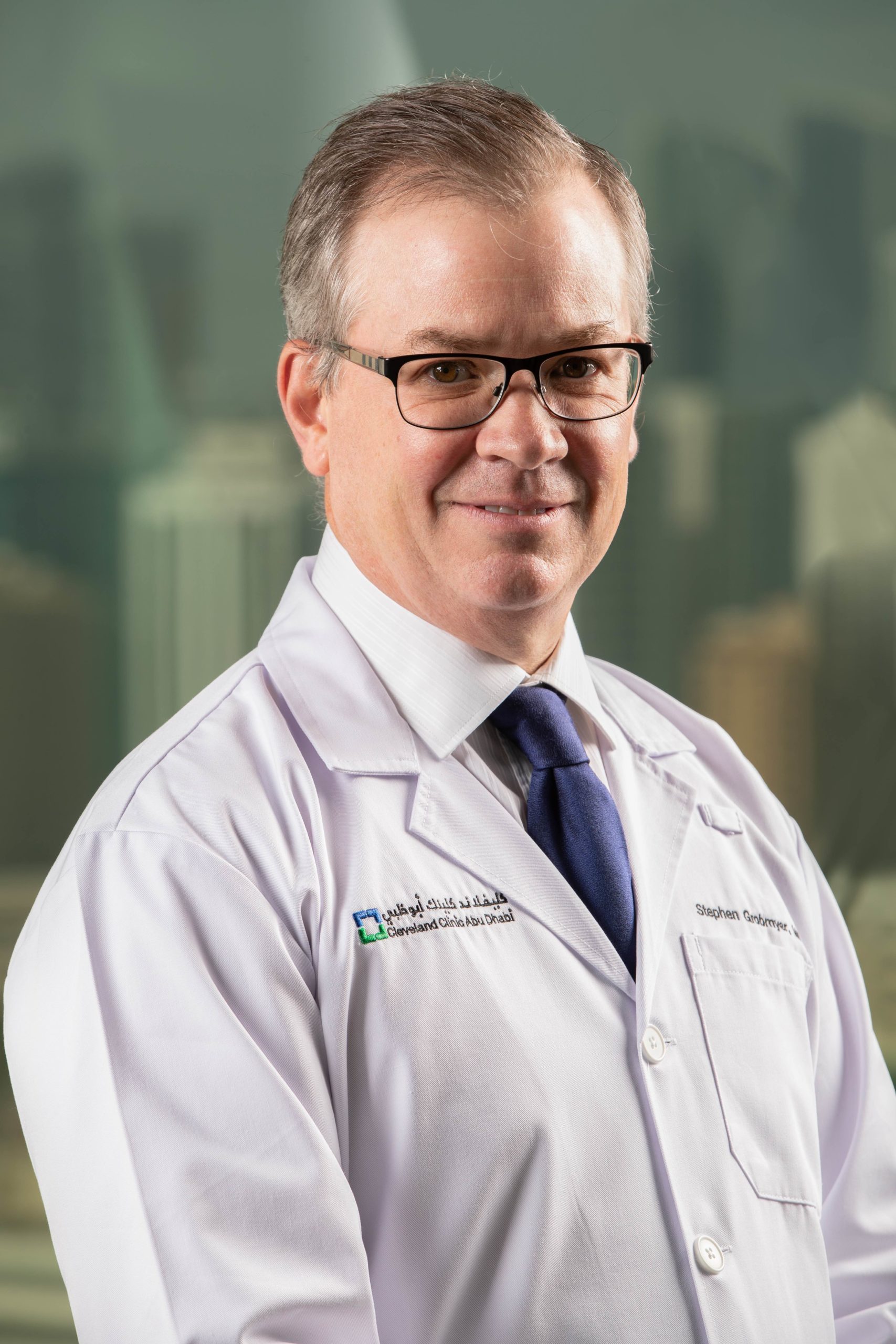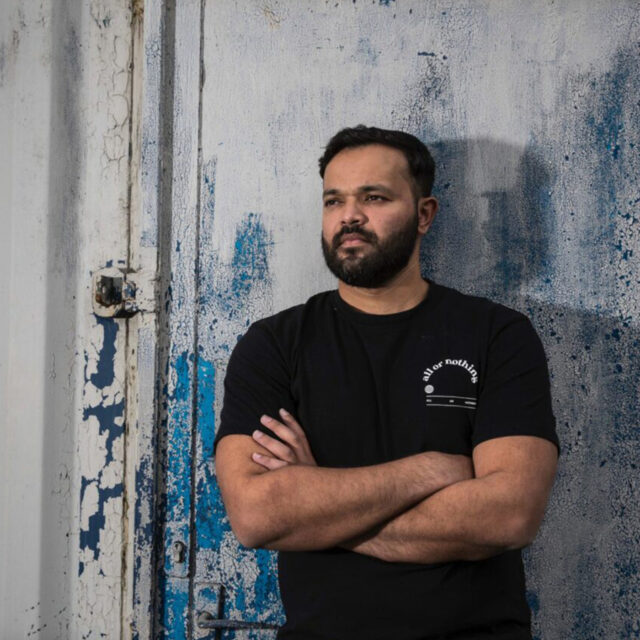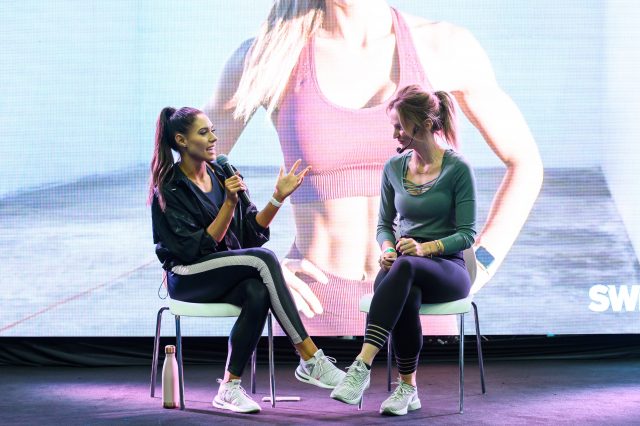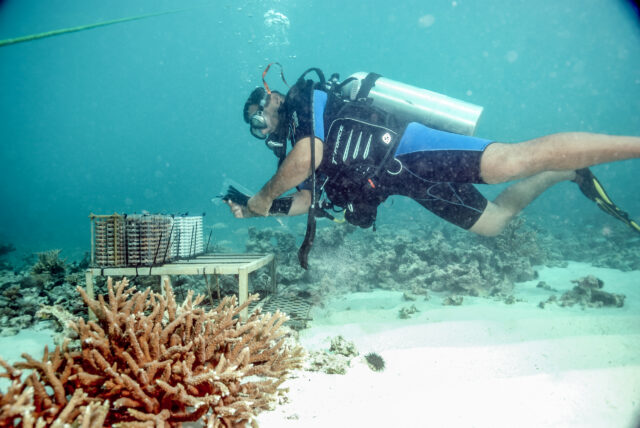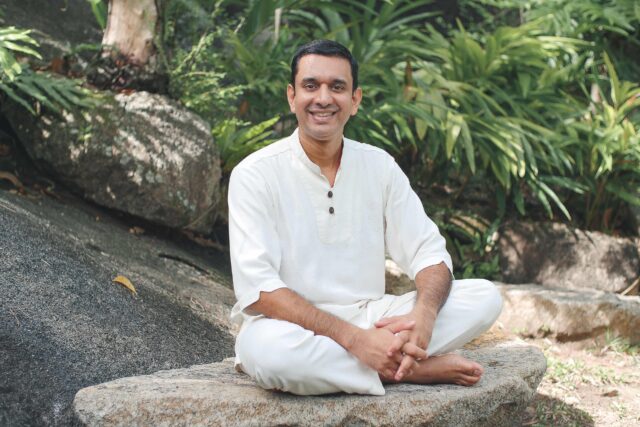In honor of Breast Cancer Awareness Month, Dr Stephen Grobmyer, director of breast cancer surgery, professor of surgery and chair of the oncology unit at Cleveland Clinic Abu Dhabi, was a guest on the livehealthy.ae podcast. He spoke about everything from new technology and research, screening recommendations and dramatically reducing our risk of getting breast cancer – and improving recovery from it – with lifestyle changes.
What are the current breast cancer screening recommendations?
For average-risk women – that is, women who do not have a strong family history of breast cancer or other high risk features, it’s recommended that screening begins at the age of 40 and that it’s done every one or two years. Different countries have different recommendations so it really should come down to a discussion between patient and doctor.
The UAE has a very fluid population – how important is it to have continuity of care?
It’s extremely important. Medicine has become extremely sub-specialized, especially in breast cancer. At Cleveland Clinic Abu Dhabi we have people with special training in breast cancer and not just in one aspect of it. There are surgeons, medical physicians specializing in breast cancer treatment, radiologists who specialize in breast imaging, all of which offers the best hope for a good outcome.
When you jump around from one hospital to another, you may end up with imaging (x-rays, ultrasound scans, MRIs, etc) at different places. It’s very helpful for doctors to have images to compare. Often it’s how we determine if a patient has problems or not, so it’s good to have it all done properly in one place.
What developments in the past year are you most excited about?
There have been so many. There is a growing body of evidence which scientifically supports the relationship between lifestyle and the risk of getting breast cancer and the outcomes for patients if they do develop breast cancer.
In the last six months there have been a number of papers on this, published in very important medical journals.
These studies are not easy to do but the preponderance of evidence continues to suggest that these things are important. You can reduce the risk of breast cancer with a low-fat diet, weight management, exercise, alcohol moderation. This is very exciting for us as breast cancer specialists and we emphasize that to our patients too.
Exercising before, during and after chemo can reduce a lot of the fatigue people feel.
Can you be more specific about what you mean by ‘low-fat diet’?
It’s what’s known as the Mediterranean diet, which is low in red meat but high in fish and fish oils. Of course, not all fats are bad. I think we all know that eating French fries is not a good idea, but there are types of fat from natural foods like avocado that can form part of a healthy diet.
Following a Mediterranean diet can not only reduce the risk of getting breast cancer but also improve heart health.
The UAE has a lot of fast food…
Fast food is high in fat and doesn’t contain a lot of high-value calories. It may be convenient in the short term but in the long term it is not good for one’s health in mitigating cancer risk or reducing the risk of other problems like hypertension and cardiovascular disease.
The best thing is to prepare your own food, relying on fresh foods, vegetables and fruits.
What about supplements?
I get asked about this all the time. In general, I’m in favor of them. We do stress that if you start taking them during the acute phase of treatment that you discuss it openly with your doctor, because while supplements have benefits, we don’t want them to interfere with an established treatment or cause complications. If a patient is having surgery, we wouldn’t want them to be on any natural products that might increase the risk of bleeding, for example. But supplements can be part of an overall plan to improve wellness.
Are there any supplements that you recommend steering clear of?
I’m pretty open-minded. What frustrates us the most is when patients entirely shun traditional treatments in favor of alternative or natural treatments. Almost without exception, those patients will still need our help.
Nobody wants to have chemotherapy or radiation, but we know that if patients follow established treatment, in many cases they can have a very good long-term outcome. Our ability to cure breast cancer has never been better. There should be a partnership of patient working with doctor, especially during the acute phase of treatment, so we can accomplish all the goals we set out for the patient.
Can you tell us about the new 3D mammogram machine at Cleveland Clinic?
It’s called tomosynthesis. It allows the radiologist to see multiple aspects of the breast in one image. It’s like a movie of the breast. The advantage is that it overcomes one of the challenges of 2D mammography, which is the density of the breast.
Breast tissue appears white on a mammogram. The problem with traditional mammography is that cancers also appear white most of the time, so in a two-dimensional mammogram it can be difficult for the radiologist to see a cancer hiding within dense tissue. With a 3D mammogram, you can see a particular area of concern from multiple angles.
It’s particularly good for younger women who usually have denser breasts or for women of any age who characteristically have dense breasts.
3D mammography also reduces the call-back rate – the number of times a woman is called back after a mammogram. We’re very excited about being able to offer it to patients.
What if you can’t get to a hospital with 3D mammography?
It’s better to have a conventional 2D mammogram than none. The lack of 3D mammography should not stop anyone from getting screened.
There’s been some concern about the radiation used in mammography. Can you allay those fears?
There is no evidence that the low dose of radiation used in mammography does any harm to patients. However, it has made some places consider reducing mammography from every year to every other year to reduce potential radiation exposure. Some also consider going back for a second one to be a ‘harm,’ or that doing a biopsy on a benign lesion is a ‘harm.’ There is some controversy over it, admittedly, but the most important thing is that mammography is done regularly and if a patient has a family history of breast cancer – if their mother and sisters and aunt had it, say – then it’s really important.
What’s the procedure when a patient comes to see you at Cleveland Clinic?
The most common way cancer presents itself is a lump. At Cleveland we take a detailed personal and family history followed by a physical examination and then we do imaging and, if required, a needle biopsy. It takes two to three working days to get the result.
I want to mention something important: some patients have concerns that a needle biopsy can spread cancer. This is not true. It’s been studied extensively over 30 years and needle biopsy is a very safe and accurate way for us to make a diagnosis that might avoid surgery for most patients.
Breast cancer treatment doesn’t always begin with surgery any more, so any way we can get information about a particular problem and that allows us to formulate a treatment strategy is invaluable and can limit the number of times a patient actually needs surgery, which is a very important goal.
What do you say when you have to tell someone they have breast cancer?
A lot of patients already have a sense that something’s not right. We try to give people hope before the biopsy and assure them that even if there’s a problem, we’ll be there to support them.
I also believe knowledge is power, so we try to empower patients with the appropriate amount of knowledge. Different people want knowledge at different rates so they’re not overwhelmed. We want to engage them in making decisions because breast cancer is not just treated in one way.
We have great nursing staff, social workers, a full team to help address many of the challenges, like what do I tell my children or my colleagues at work?
We try to bring these challenges to the forefront of the discussion so that patients don’t feel silly asking about them.
What are the biggest differences you see between breast cancer patients in the US and in the UAE?
We’re seeing a preponderance of younger women with breast cancer in the UAE and there’s a lot of discussion about it. It might be that breast cancer is a slightly different disease here, or it might be that we’re dealing with a population that is younger in general, but we do seem to be seeing younger women with more advanced breast cancer at the time they come to us. Maybe we should consider bringing in screening at a younger age but we need to put together all the available data. We’ve even seen 24-year-old women. Most have a benign condition, not breast cancer, but it would be wrong to assume it was a benign condition.
Breast health awareness is critical. It’s about empowering people to take control and ask questions. There is no doubt that when we diagnose at an early stage, a patient is less likely to need more aggressive treatment, like chemo, and the outcomes are much better.
What changes do women need to watch out for?
People should know their own body. In the old days, we would recommend routine self-examination, but a lot of experts have decided that’s not appropriate for everyone. Then there’s the fact that breasts change through the menstrual cycle. There are women who have a baseline of irregular breast tissue and they’re not confident about doing self-examination so they end up going in once a month to get checked out.
The key is to recognize a change from what they’re used to, like if you find a lump and it doesn’t go away after a short time. What’s a short time? Within the month. Certainly waiting three to four months is not a good idea. Or if there’s a new discharge, especially if it’s clear or there’s blood in it. If there’s redness in the skin, one tends to assume it’s an infection but it isn’t always. It’s empowering to get checked.
Is there a connection between breast cancer and stress?
We go back to lifestyle modification. There’s growing evidence that the factors we have direct control over, like smoking or alcohol consumption, can have an impact on our genes and cause them to function abnormally and may predispose you to a higher risk of breast cancer.
There is a biology to stress, no question about that. It leads to more inflammation and more steroids in the body, so we have to believe it has an an impact indirectly on our genetics. I’m sure we’ll find more scientific evidence to back this up in years to come.
Dr Stephen Grobmyer from Cleveland Clinic Abu Dhabi was a guest on the Livehealthy podcast October 21, 2020.
